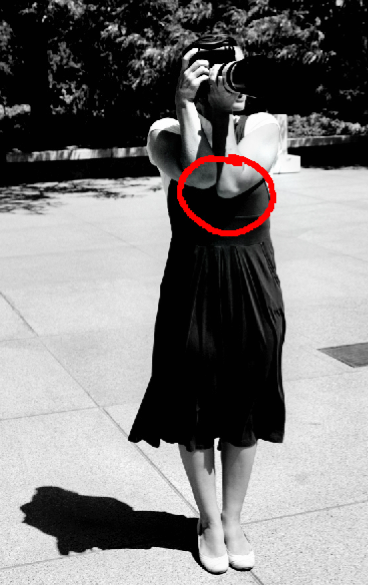Image Stabilizer For Any Camera - Lose The Tripod
6 Techniques to Reduce Camera Shake
Here are 6 options for avoiding camera shake and achieving crisp, delicious images no matter the length of the lens, no matter the shutter speed.
1. Elbows In
As often as possible pull your elbows in to your body and exhale completely before depressing the shutter. When you’re working with a wide aperture or low shutter speed (or both), even a breath can introduce shake. Pulling your elbows tight to your body can really help keep you steady. I also press my elbows firmly into my chest for even greater stability.

Watch remaining 5 Techniques to Reduce Camera Shake
Erin Manning's Top 10 Dos and Don'ts for Great Portraits
The World's Most Extreme Photography Equipment

Image: Robert
There are several categories of camera gear available: there's the sensible, the desirable and then there's the stuff that you'd never even imagined. Here's a selection of equipment that most definitely belongs in the latter category.
Read Full Article Here
The Ten Legal Commandments of Photography
I. Anyone in a public place can take pictures of anything they want. Public places include parks, sidewalks, malls, etc. Malls? Yeah. Even though it’s technically private property, being open to the public makes it public space.
II. If you are on public property, you can take pictures of private property. If a building, for example, is visible from the sidewalk, it’s fair game.
III. If you are on private property and are asked not to take pictures, you are obligated to honor that request. This includes posted signs.
IV. Sensitive government buildings (military bases, nuclear facilities) can prohibit photography if it is deemed a threat to national security.
V. People can be photographed if they are in public (without their consent) unless they have secluded themselves and can expect a reasonable degree of privacy. Kids swimming in a fountain? Okay. Somebody entering their PIN at the ATM? Not okay.
VI. The following can almost always be photographed from public places, despite popular opinion:
- accident & fire scenes, criminal activities
- bridges & other infrastructure, transportation facilities (i.e. airports)
- industrial facilities, Superfund sites
- public utilities, residential & commercial buildings
- children, celebrities, law enforcement officers
- UFOs, the Loch Ness Monster, Chuck Norris
VII. Although “security” is often given as the reason somebody doesn’t want you to take photos, it’s rarely valid. Taking a photo of a publicly visible subject does not constitute terrorism, nor does it infringe on a company’s trade secrets.
VIII. If you are challenged, you do not have to explain why you are taking pictures, nor to you have to disclose your identity (except in some cases when questioned by a law enforcement officer.)
IX. Private parties have very limited rights to detain you against your will, and can be subject to legal action if they harass you.
X. If someone tries to confiscate your camera and/or film, you don’t have to give it to them. If they take it by force or threaten you, they can be liable for things like theft and coercion. Even law enforcement officers need a court order.
Sony Cybershot H50
Sony H50 megazoom camera features
• 9.1 effective megapixels
• High power 15x optical zoom Carl Zeiss Vario-Tessar lens
• Large 3.0-inch (230K dot) Clear Photo Tilting LCD Plus screen
• Enhanced Face Detection for clearer portraits
• Smile Shutter
• D-Range Optimiser + DRO Plus mode for natural results with high-contrast scenes
• Double Anti-blur with Super SteadyShot
• High Sensitivity ISO 3200 for clearer low-light shooting
• Advanced Sports Shooting mode captures fast-moving subjects
For Deep Review visit





